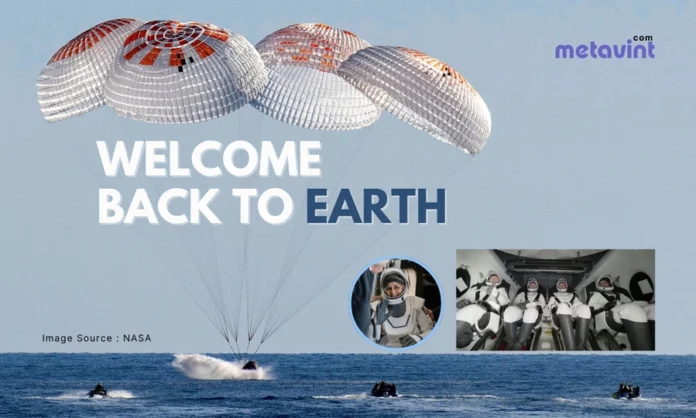After 286 days in orbit, NASA astronauts Sunita “Suni” Williams, Nick Hague, Butch Wilmore, and Roscosmos cosmonaut Aleksandr Gorbunov splashed down triumphantly in the Gulf of Mexico on March 18, 2025. Their extended mission aboard the International Space Station (ISS)—marked by grit reminiscent of early space pioneers—overcame technical hurdles and delivered historic contributions to space exploration.
A Mission of Resilience
Originally launched for a brief stint aboard Boeing’s Starliner, Williams and Wilmore faced unexpected delays when spacecraft issues stretched their stay to over nine months. Joined by Hague and Gorbunov, the crew adapted to life in microgravity, turning setbacks into opportunities for science and teamwork. Their perseverance echoes the tenacity of Apollo-era astronauts, proving humanity’s drive to conquer the cosmos endures.
Scientific Breakthroughs
The team’s 286-day stint yielded critical research for future missions:
Microgravity Health Studies
They explored how prolonged spaceflight affects muscles, bones, and hearts—data vital for Mars-bound explorers.
Starliner Testing
Williams and Wilmore troubleshooted systems, aiding Boeing’s spacecraft upgrades.
Earth Monitoring
Using ISS technology, they tracked climate shifts and pollution levels.
Space Farming
Experiments with plant growth could help feed future crews on distant worlds.
The Return: A Perfect Splashdown
After months in orbit, the quartet returned via SpaceX’s Dragon capsule, landing off Florida’s coast at 6 p.m. local time. Recovery teams swiftly assisted them out, conducting initial health checks. All four appeared well, though readjusting to gravity will take time after their long cosmic journey.
Watch Their Landing:
Splashdown of Dragon confirmed – welcome back to Earth, Nick, Suni, Butch, and Aleks! pic.twitter.com/M4RZ6UYsQ2
— SpaceX (@SpaceX) March 18, 2025
Sunita Williams’ Historic Feat
Veteran astronaut Sunita Williams cemented her legacy, logging over 62 hours of spacewalks and becoming one of NASA’s most seasoned female explorers. “We didn’t plan to stay this long, but we adapted and kept pushing forward,” she said post-landing. Her leadership steadied the crew through uncertainty, preparing them for missions beyond Earth’s orbit.
Watch Them Exit the Capsule:
What’s Next?
The mission’s lessons—on spacecraft reliability, astronaut training, and long-term habitation—will shape NASA’s Artemis program and Mars ambitions. Boeing’s Starliner will see upgrades, while the crew’s data bolsters deep-space readiness. After rehab to regain their Earth legs, Williams and company will mentor the next wave of starfarers.
A Global Triumph
From NASA’s Bill Nelson to Roscosmos leaders, praise poured in for the crew’s grit and the power of international collaboration. “Their resilience lights the path ahead,” Nelson noted. Space fans worldwide followed their saga, captivated by this blend of modern tech and timeless courage.
Conclusion
The safe return of Williams, Hague, Wilmore, and Gorbunov marks a milestone in humanity’s cosmic journey. Their extended ISS stay bridges past pioneers with future frontiers, proving we’re ready for the Moon, Mars, and beyond.
What do you think the next chapter of space exploration holds? Share your thoughts below!

